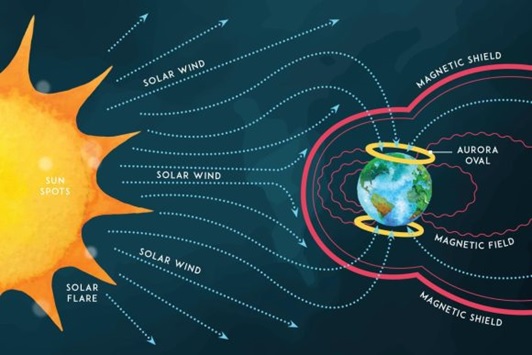7667766266
enquiry@shankarias.in
A crimson glow lit up the dark sky in parts of Ladakh in a rare stable auroral red arc event at the Hanle Dark Sky Reserve in the high Himalayas due to the strong solar magnetic storms launched towards Earth.
Auroras visibility is seen in regions about 66.5° north and south of the Equator.
|
Region |
Known as |
|
In north (Arctic circle) it is called as northern lights |
Aurora borealis |
|
In south (Antarctic Circle) it is called as southern lights |
Aurora australis |
The magnetosphere is a protective magnetic field that surrounds our planet and deflects most of the solar wind particles.

|
Hanle Dark Sky Reserve (HDSR) |
|